Here’s a cool way to do a classic pendulum science experiment. Build your pendulum out of LEGO bricks! You won’t need complicated pieces, and it’s easy to change both the mass and length of the pendulum.
This project is part of our LEGO STEM Projects series. We’ve got all kinds of engineering projects to explore with LEGO bricks, so you’ll want to be sure to check them all out.
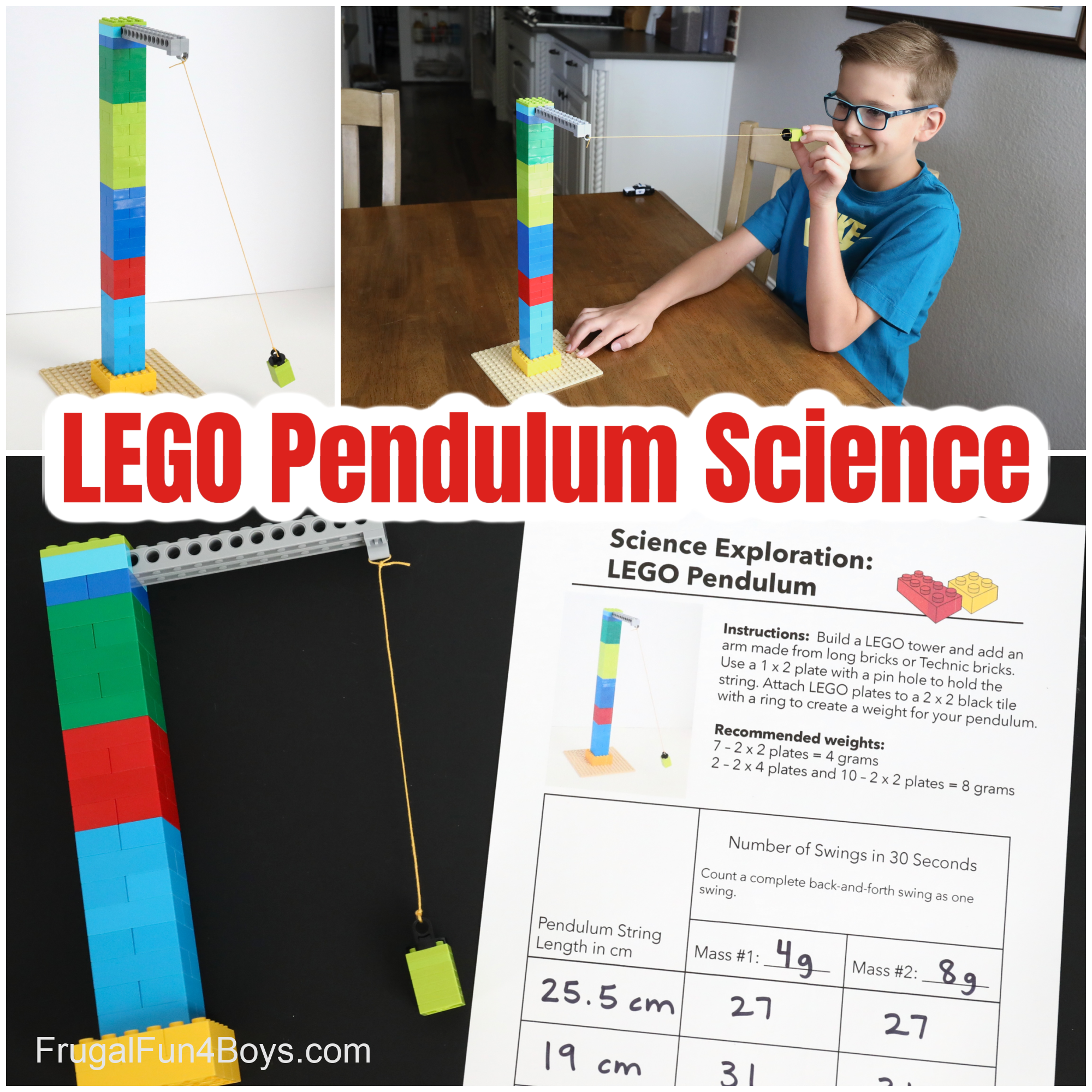
What Affects a Pendulum’s Period?
The purpose of this experiment is to determine how mass and length affect a pendulum’s period. The period is the amount of time it takes for the pendulum to make a complete back-and-forth swing.
Before conducting the experiment, make a hypothesis. Will a pendulum with more mass complete more swings in 30 seconds than a pendulum with less mass? Will a shorter pendulum complete more swings in 30 seconds than a longer pendulum?
SPOILER: The period of a pendulum depends on the length, and is NOT affected by the mass. It is also not affected by the angle at which you release the pendulum.
In high school and college physics, students will learn that the period also depends on acceleration due to gravity.
How to Build a LEGO Pendulum
Here’s how we built our LEGO pendulum. It’s just a basic tower with some long Technic bricks sticking out. They don’t need to be Technic bricks (the bricks with the holes) – regular bricks will work just fine.
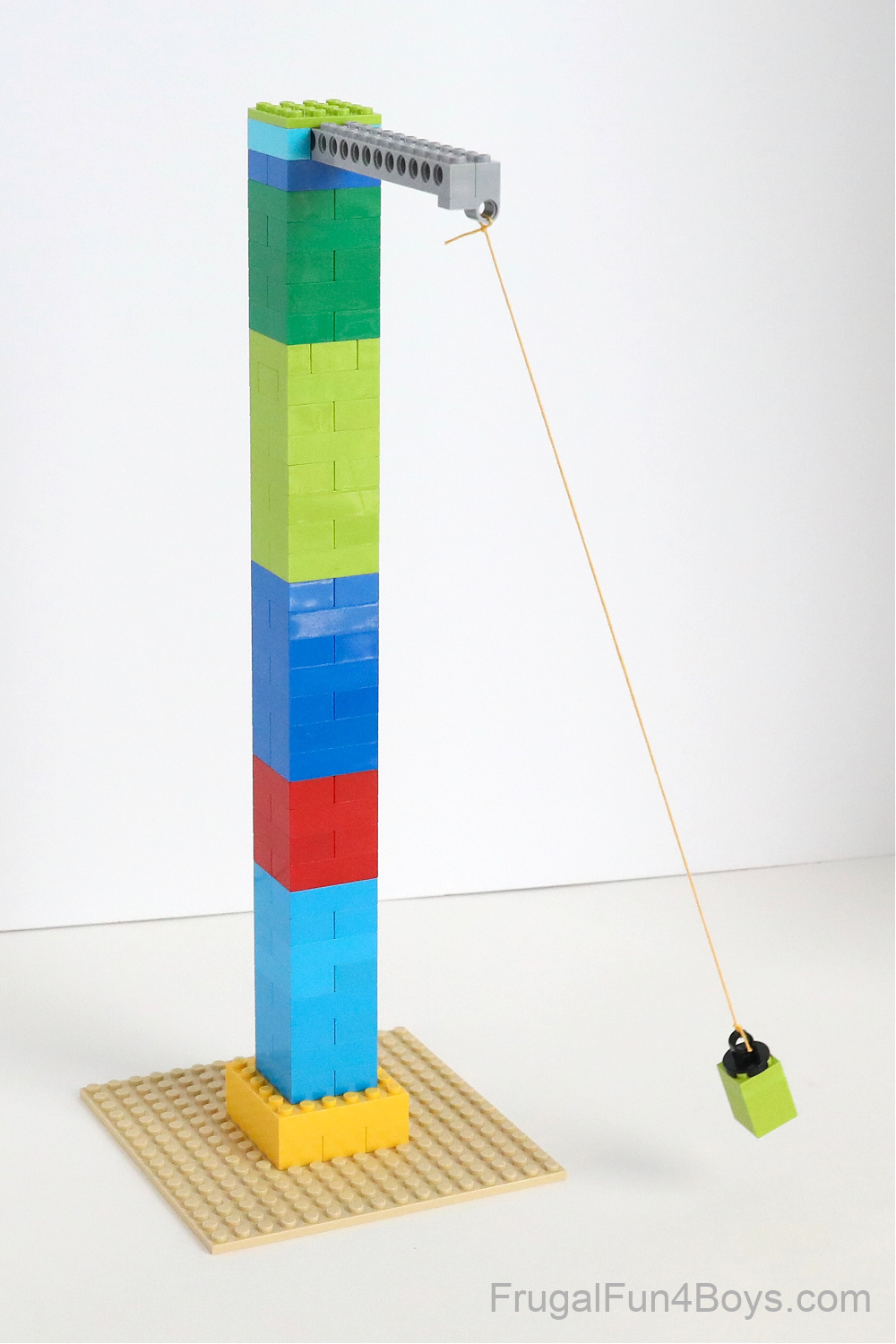
The arm for our pendulum is two 1 x 16 Technic bricks. If you don’t have bricks that long, use some plates (flat bricks) to connect shorter bricks. You DO want the arm to stick by 12 studs or so.
These two LEGO elements are key, however:
You’ll need a 1 x 2 plate with a pin hole or something else with a pin hole. It’s very important that the hole is oriented the way you see in the photo. At first, we had the hole turned 90 degrees from what you see here, and this caused the pendulum to swing unevenly and eventually hit the tower and stop. If you have the hole perpendicular to the string like this, it works really well.
A 2 x 2 round tile with ring is really useful for attaching the mass to the pendulum. You can easily switch out different amounts of mass without having to tie the string again.

We have a digital kitchen scale that I used to weigh our LEGO bricks to determine the mass of our different weights. I wanted one that was double the mass of the other, and I was able to accomplish this.
Here’s how to build the weights:
4 grams = seven 2 x 2 plates
8 grams = two 2 x 4 plates and ten 2 x 2 plates
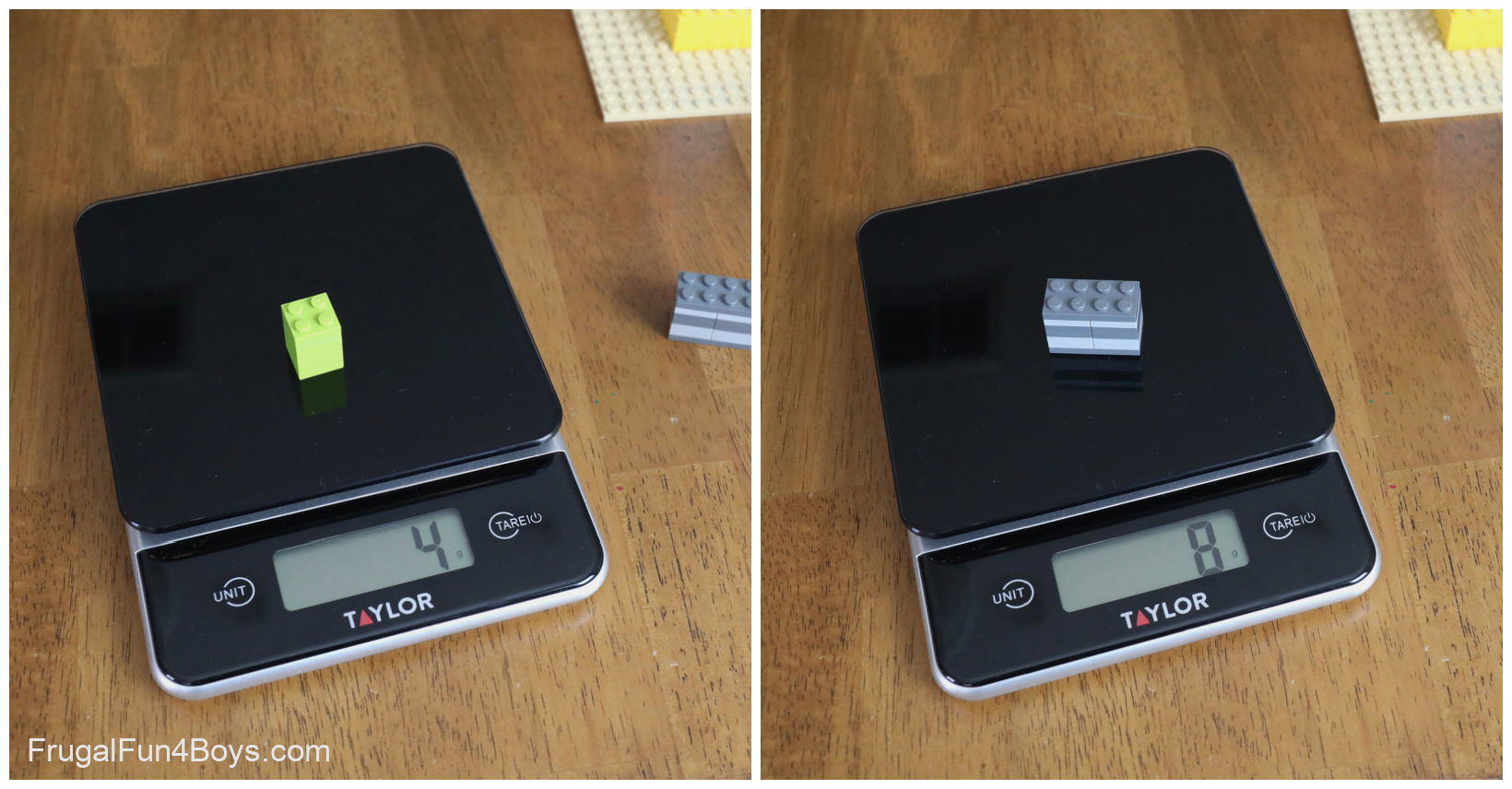
Now, 4 g and 8 g are both very light… if you want to try a heavier mass, you might want to figure out how to attach something metal to the string. You could tie a few washers on there instead of using LEGO.
Like I said above, the mass does not affect the period of the pendulum. But if your students are skeptical, you may want to try testing masses that have a greater difference between them.
Changing the Height of the LEGO Pendulum
It’s really easy to add bricks or remove bricks to change the height of your pendulum tower! You’ll need to change out the string also.
This was our shortest pendulum.
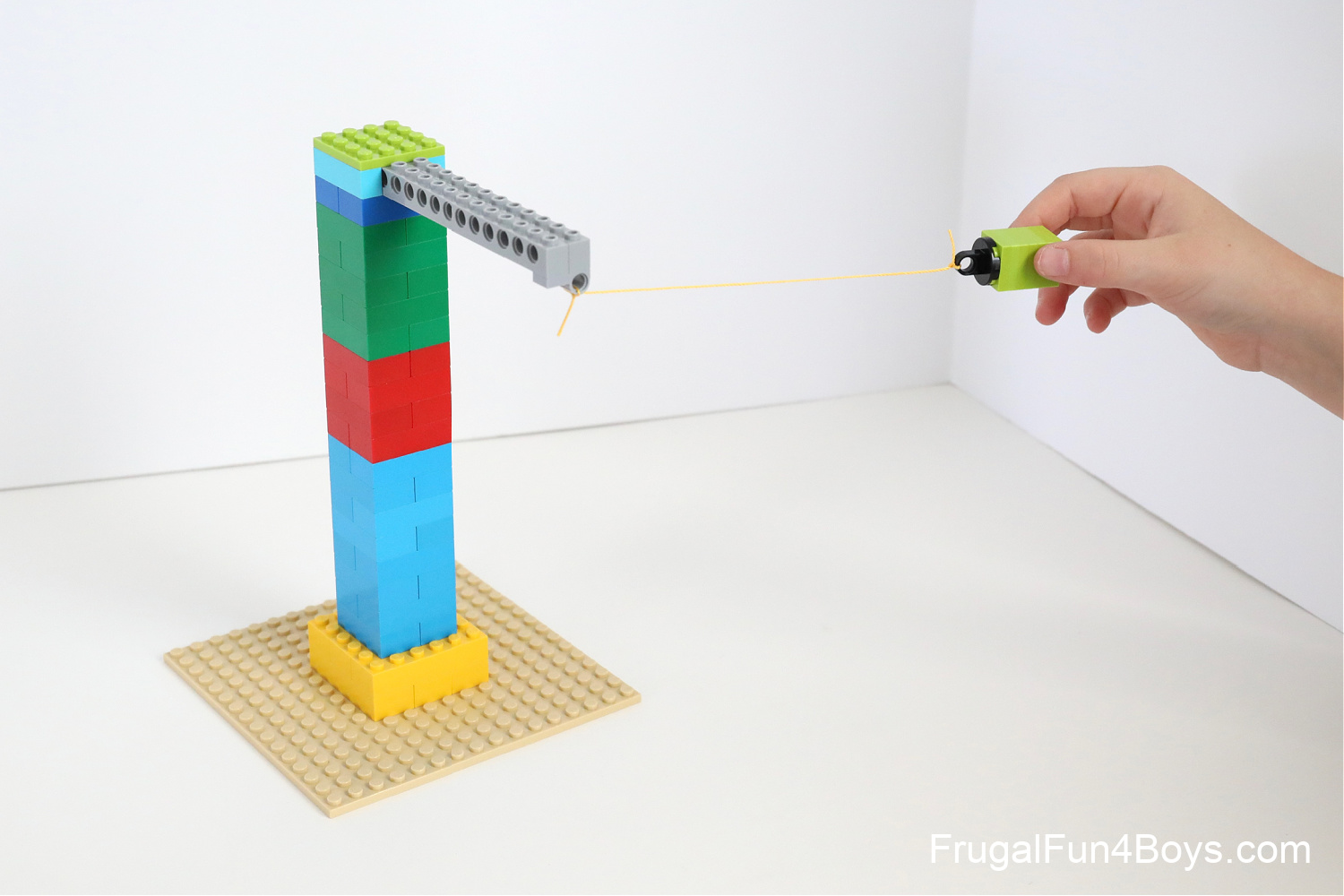
We chose to tie the string first, and then measure and record the length. It’s a little challenging to tie a knot in the string and have it come out exactly the length you want… especially for younger kids. For older kids and teens, you can specify the length you want them to test and have them make the string that length.
Angle of Release
It doesn’t matter what angle you use to release the pendulum! However, for the sake of learning to value consistency in lab experiments, I would ask students to release the pendulum from the same height each time.
If they release it too low, it will also stop swinging sooner than you want it to.
We released ours at a 90 degree angle, or level with the top of the tower. It doesn’t look like it in this photo (above) but it really was level in real life!
Recording Sheet
I made a simple sheet with a chart for recording the number of complete swings in 30 seconds. There are spaces to test three different string lengths and two different masses.
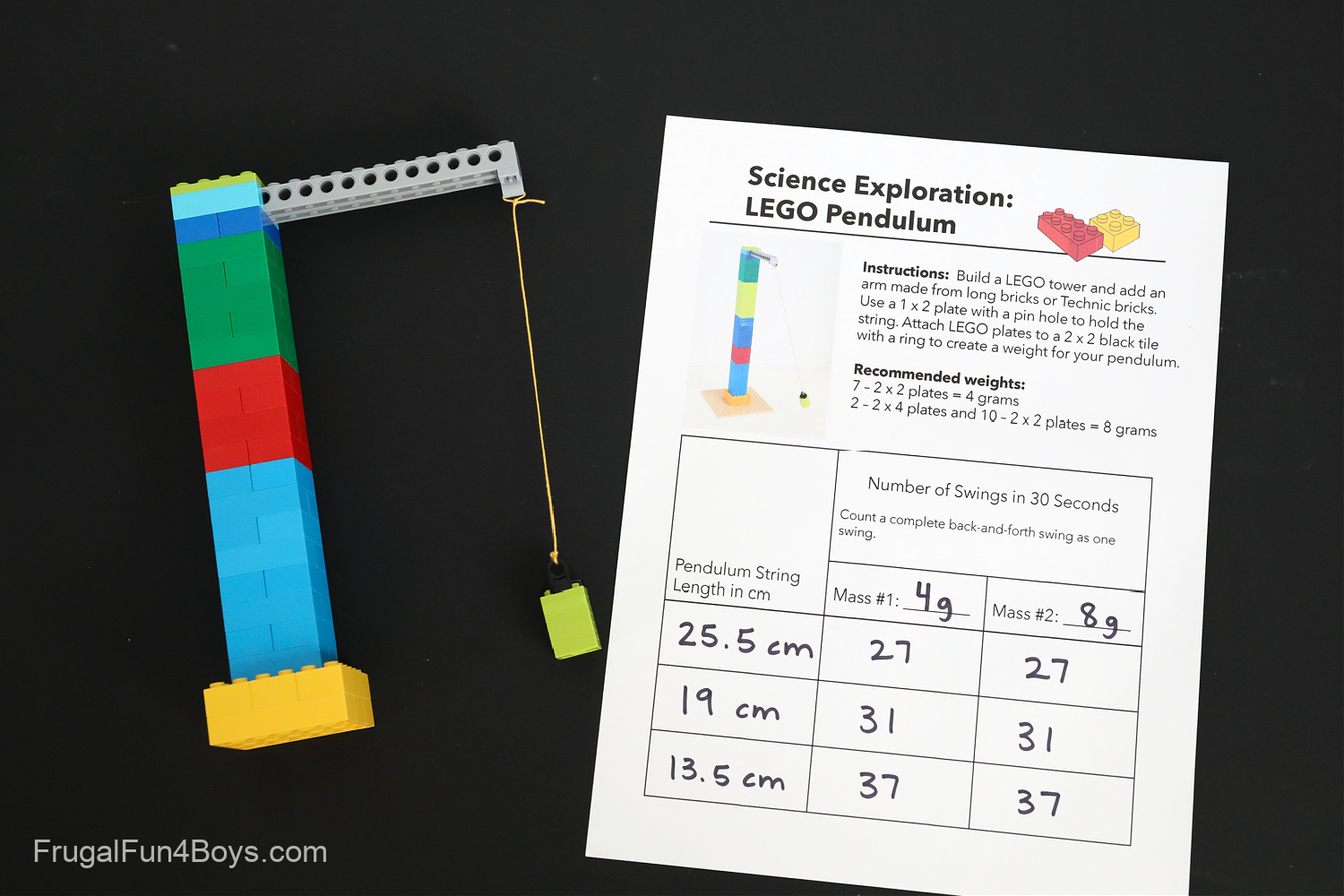
Ready to Print the Recording Sheet?
Visit the link below. The document will open and you can print from there.
LEGO Pendulum Experiment Recording Sheet
Want more LEGO STEM ideas?
Be sure to check out all of our LEGO STEM Projects! Make working pulleys, a rubber band powered car, a catapult, a candy machine, and more.
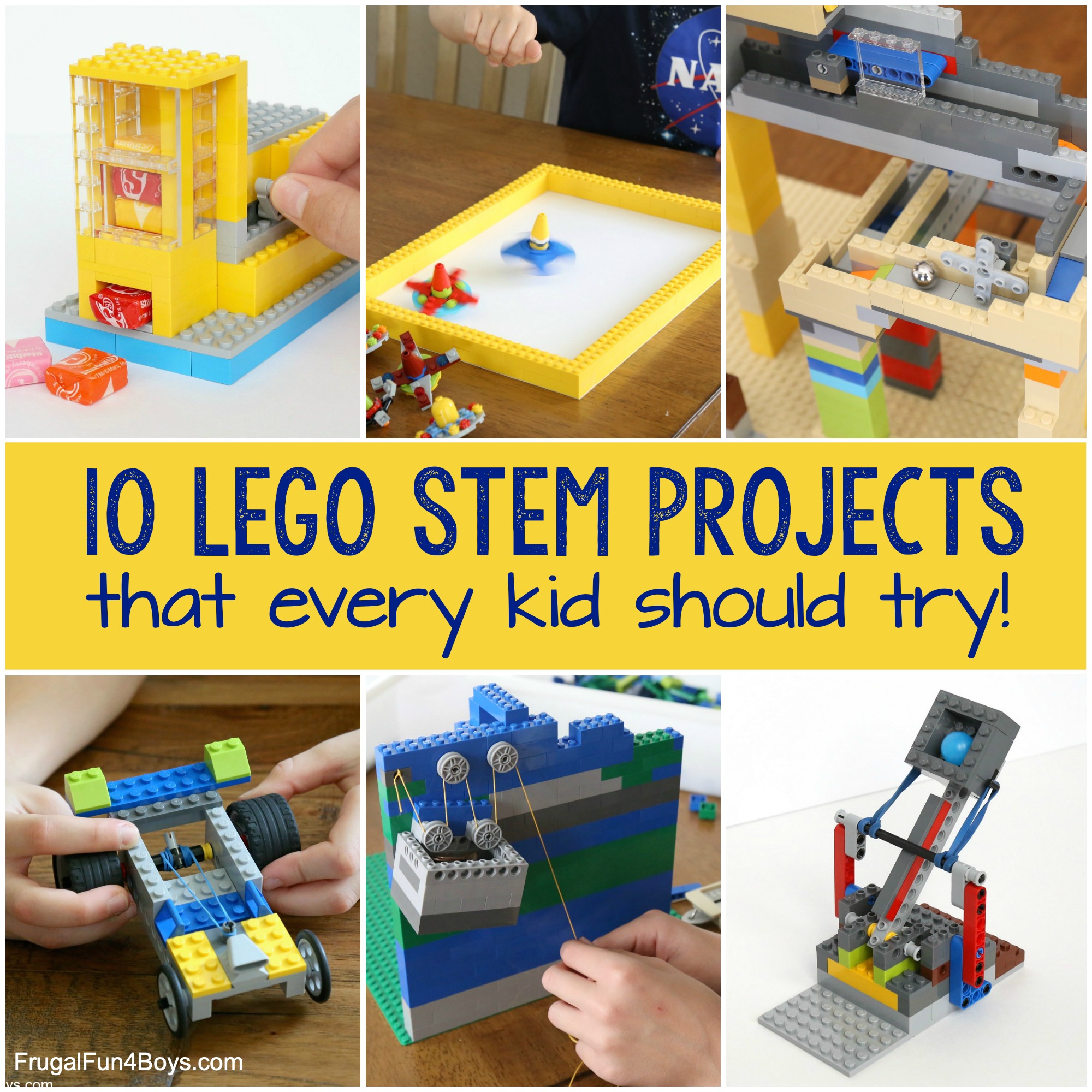

0 Comments
Post a Comment